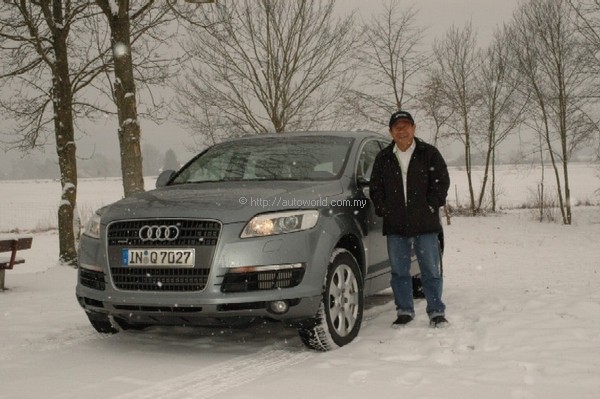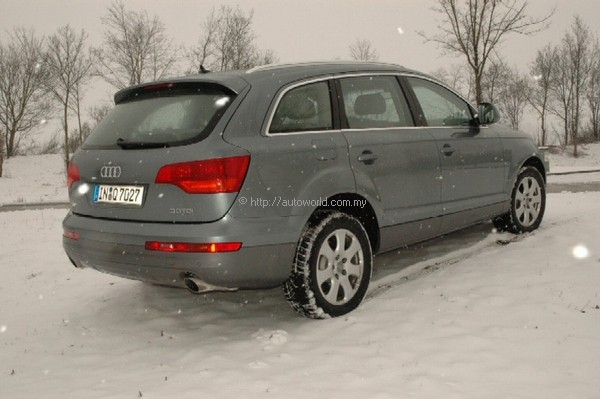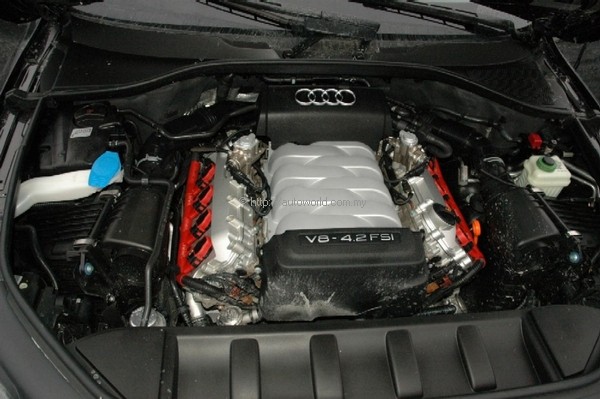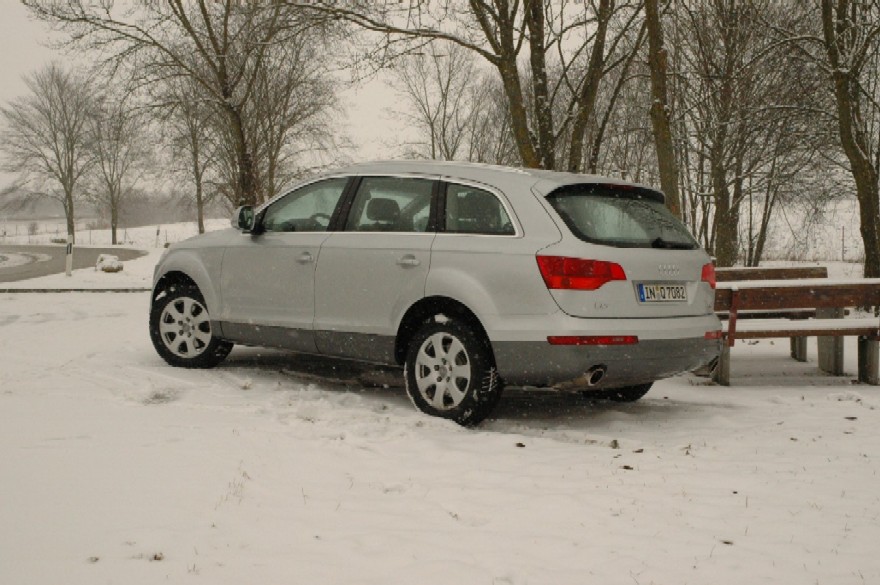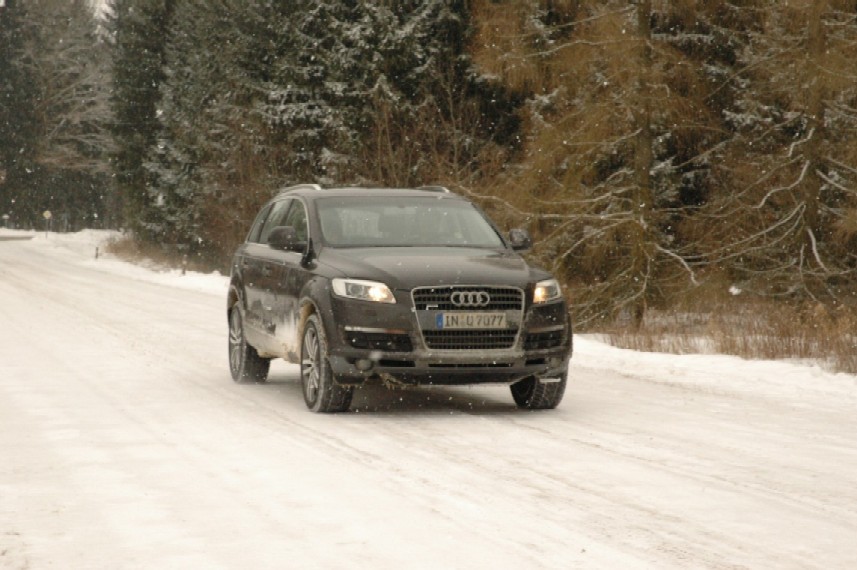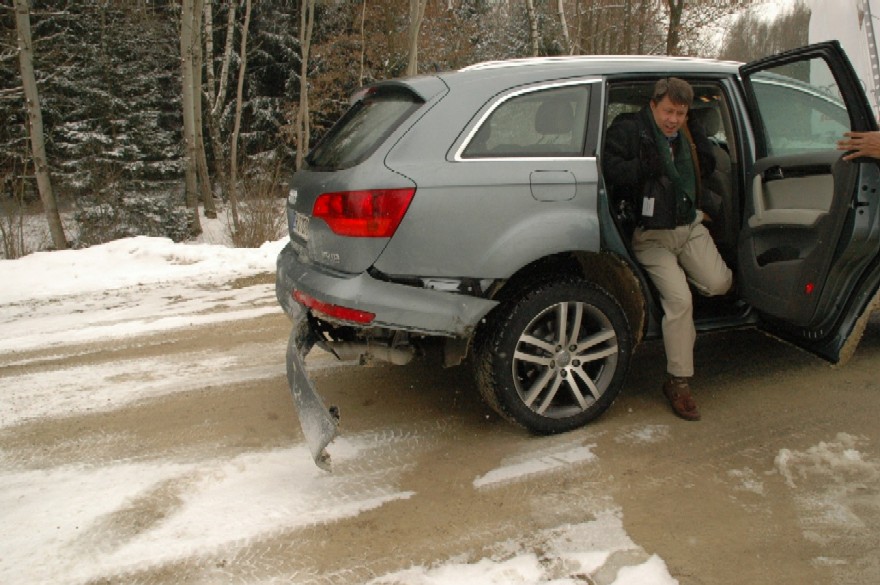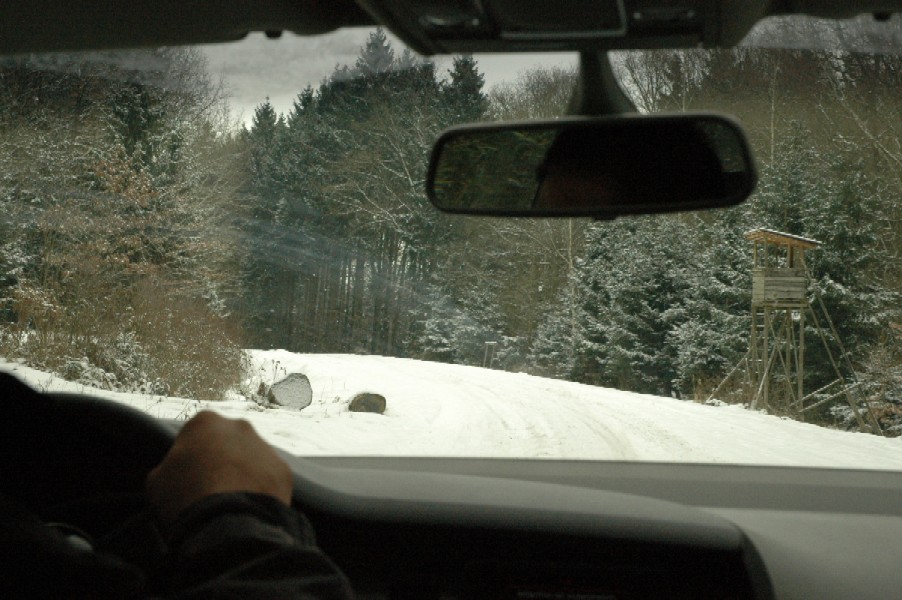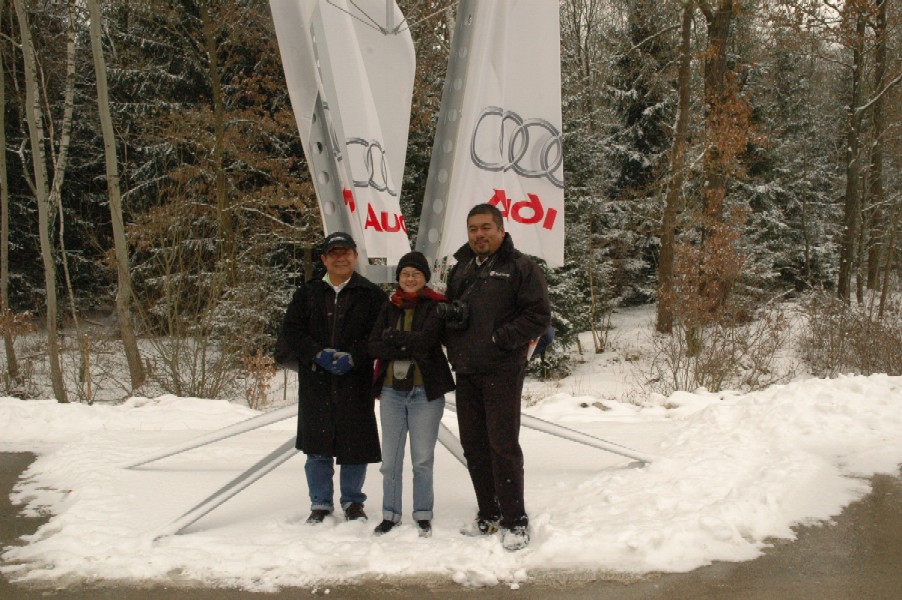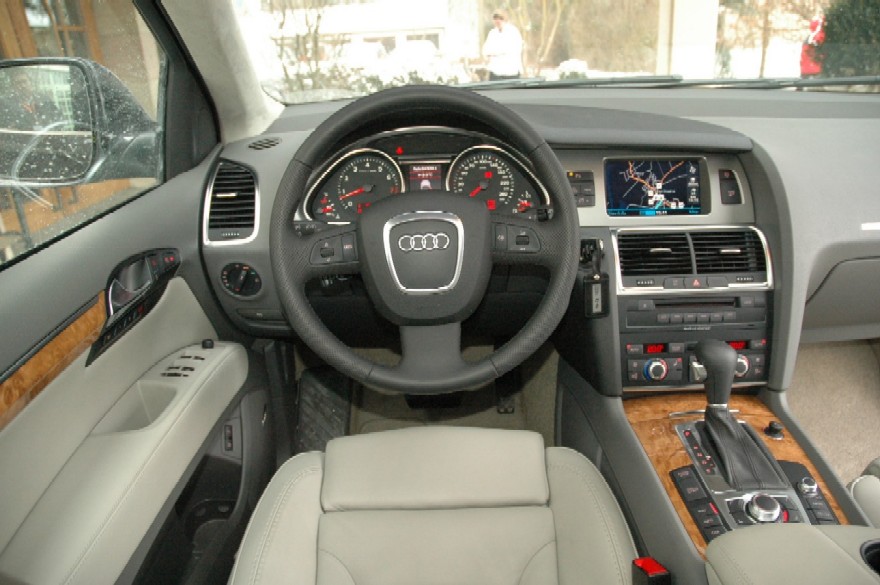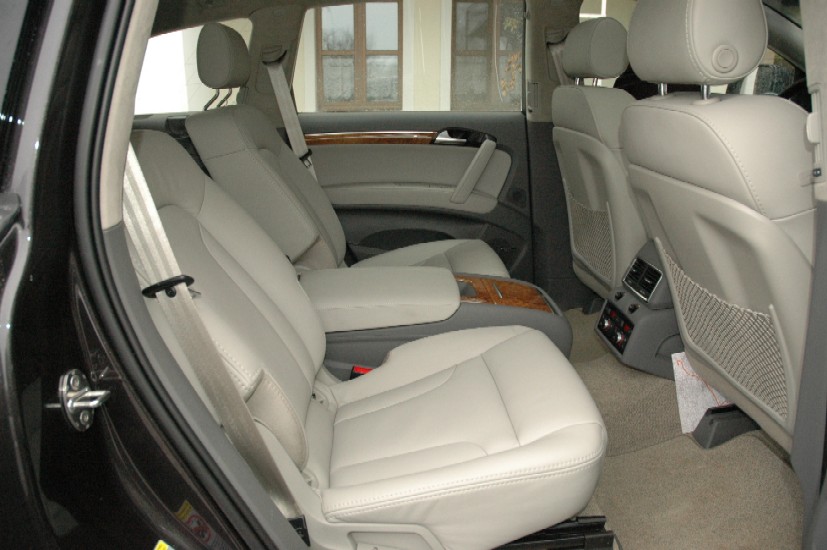Fun in the Snow with the Audi Q7
The latest SUV to hit the world market is the very exciting Audi Q7. First introduced in the autumn of 2005 at the Frankfurt Motor Show, the Audi Q7 is the latest ‘third generation’ SUV that combines sportiness and versatility, sophisticated technology, and the luxury of a premium-class vehicle. Made by the same people who gave a new meaning to 4WD vehicles in the form of the Audi Quattro more than a quarter of a century ago, the Audi Q7 has moved the goalpost in the quest for the better SUV.
The early representatives in the SUV category were angular beasts with a strictly off-road character in both looks and performance. The second generation took on a softer approach, with clear orientation towards on-road capabilities. In contrast, the Q7 is a new generation performance SUV, combining the best features from both the first and second generations. The result is a vehicle that provides sporty on-road performance, yet has genuine off-road capabilities, while its occupants enjoy the luxuries of a large premium vehicle.
In terms of looks, the Q7 has an aggressive-looking front that is a promise of a powerful engine lurking behind the striking single-frame grille, an impression also contributed to by the large combination lights accentuated by two even larger air-intake holes under them, and a long, humped bonnet. The very pronounced front is followed by a high waistline that tapers towards sharply sloping D-pillars at the tail end, giving the Q7 a coupe-like silhouette.
Measuring 5,086mm in length, 1,983mm in width, 1,737mm in height, plus a wheelbase of 3,002mm, the Q7 is way ahead in terms of size. Put side by side with a Cayenne or a Tuoureg, the Q7 is visibly longer. In truth, they all share the same platform, and the Q7 is built on one that has been extended.
Inside, the Q7 seats up to 7 people in the three rows of seats. Both the rear rows fold flat to provide up to more than two cubic metres of boot space. There are more than 28 combinations of seating and loading configurations, making the Q7 a very versatile SUV for various usages. There are many options for the interior, including leather upholstery, electric controls, panoramic roof, and sunroof. Euromobil will determine the specifications for imports to Malaysia; but it is also possible to order your vehicle according to your personal preferences.
There are three engine options, starting with a 3.0 litre, V6 common-rail turbo diesel with piezo inline injectors, delivering 233 bhp and 500 Nm of torque. The gasoline engine currently available is the new 4.2 litre V8 with FSI petrol direct injection that develops 350 bhp and 440 Nm of torque. A new 3.6 litre FSI V6 engine will be made available as an option from the second half of this year.
All the three versions will be coupled to a 6-speed tiptronic transmission with a manual shift option as standard. Naturally, in the tradition of quattro, the Q7 will feature permanent four-wheel drive. A centre differential conveys power to all four wheels, both on-road and off-road. The differential works on immediate demand-based distribution of torque, to provide maximum traction and lateral stability. The quattro technology has been in existence for more than 25 years and over two million production models, starting with the WRC-renowned Audi quattro rally car of the early eighties.
Like the high-performance Audi RS4 and the Audi S8, the Q7 features the latest-generation self-locking differential with asymmetric/dynamic torque split. In standard operating mode, the torque split between the front and rear axle is 40:60. This arrangement results in slightly sporty, and tail-heavy behaviour, allowing one to use ‘power slides’ for better agility, and has practically no torque steer.
The suspension is based on the Cayenne and the Tuoureg, looking very similar, although the designers swear the settings are different. To recap, all four wheels are independently suspended on double wishbones, with steel springs and twin-tube shock absorbers. Also noted is the heavy use of aluminium construction for many of the parts to reduce un-sprung weight. Standard rubber is 235/60 tyres on 18-inch alloys; 19 and 20-inch wheels are available as options. The 4.2 litre FSI comes with slightly broader 255/55 tyres as standard. Also available is adaptive air suspension; this combines with an electronically controlled damping system to balance between a comfortable ride and sporty performance.
As if that wasn’t enough, the Q7 comes with massive high performance brakes, which come with ABS and ESP (Electronic Stability Program) with additional functions such as hill descent assist, and a special ‘off-road’ mode that optimises brake performance and traction especially on loose ground.
At guests of Euromobil, the local importers and distributors of the Audi brand, and Audi AG, a group of journalists from Asean were whisked to Munich, Germany to give the Q7 a shakedown. The event involved a round-trip of more than 300 kilometres of highway and country roads north of Munich and back, and included a twelve-kilometre dirt stage that has previously been utilised as a rally special stage.
On the morning of the drive, we woke up to find the landscape all white. It had snowed the night before, and the scenery that unfolded before us was a breathtaking and ethereal white. The snow continued throughout the day, and it was a beautiful sight to see the lovely snowflakes drifting steadily downwards. Temperatures were in the low negatives, but the cold did not lower our enthusiasm in any way. Inside the Q7, it was cosy though, what with individual temperature controls for each side of the vehicle and a great ventilation system that kept us fresh and alert throughout. With winter clothing on, I found that anything between 18 to 19 degrees Celsius was pleasant and warm inside while the outside temperature indicator showed a minus 4 degrees.
The drive on the autobahn (where there is no speed limit) was uneventful enough. We started off in the diesel powered 3.0 litre Q7. My co-driver, a petite miss from another paper, had no problems clocking 180 kilometres per hour in the light snow; this speed sent some shivers up and down my spine at first, until it was my turn, and found the Q7 very easy to drive and very stable at high speeds. I managed to lick 210 on the meter before I decided not to chance it any further, considering that the road seemed a little wetter than earlier, and traffic was building up a little. We drove on winter tyres, which are certainly not the best for high speed cruising; even then, the Q7 felt quite secure. After the autobahn stretch, we were routed through some country roads, and some of the places were so beautiful that we had to stop to take some pictures. Some parts of the roads were covered in snow, though, and braking on icy patches is quite hairy, activating the traction control systems and ABS.
When we arrived at the rally track, we had to get down and go into a ‘holding’ tent for a quick briefing on the dirt section. As the track was slippery and wet with ice, mud and snow, the Audi people allowed only six vehicles to be used. That meant we had to wait our turn. By and by, our turn came by, and we each took the Q7 around the 12-kilometre track for a taste of the unknown, for none of us had driven in snow before. Believe me when I say that it was really slippery; amongst the group of more than 30 journalists, there were a couple of ‘offs’, including an argument with a signpost in which the signpost won, and the Q7 lost a rear bumper. Without the traction control system and the permanent four-wheel drive, the Q7 would have been impossible to control, so it is a real tribute to the Q7 to be able to go through what it did. For me, it was a very interesting and rewarding experience, plus the fact that I could stick out my tongue to catch a snowflake whenever I got thirsty, or just for the novelty of it.
Already, there are many people interested to know more about the Audi Q7. Local prices are not published as yet, but it certainly looks like it will be not for the faint-hearted with thin chequebooks. Just for the record, the basic price of the 3.0 Diesel in Germany is 48,900 euros, while the list price for the Q7 4.2 FSI is 64,900 euros. With the extra row of seats, it certainly is a more versatile machine than those that can carry only five.




